Estimated reading time: 9 minutes
Do you have any mystery fruit trees in your garden that you’d like to identify?
There are a number of ways you can positively ID a tree – fruit being the easiest – but flowers can provide a great clue.
With more than 15 types of fruit and over 100 different varieties at our place, we’ve got lots of experience with the way different flowers look.
What variety of trees do you have?
Fruit blossoms can be very similar across varieties, but most fruit tree types have distinctive flowers.
Learning how apple flowers differ from apricot flowers (for example) is just another tool in your toolbox that will help you to be a great garden detective.
Spring is one of the key times to be paying lots of attention to your fruit trees and even taking photos for future reference.
Why does identifying fruit trees matter?
We know all the varieties of trees in our orchard and garden because we planted them. But if you’ve moved into a property with existing trees, you may have no idea what they are.
Why are we making a fuss about what sort of fruit tree you have? Surely you’ll find out soon enough when the tree has fruit, right?
Well yes, in theory.
But in practice, if you don’t know what sort of tree you have, you won’t be able to give the tree the appropriate care.
And if you don’t look after your tree the right way, there’s a good chance you won’t get any fruit at all. We highly recommend that all fruit tree owners tune into nature and learn to read what their fruit trees are telling them.
But the bottom line is that you risk another season passing and you’ll still be in the dark.
Parts of a flower
The colour of the petals is one of things you’ll be looking for, but it can also be useful to check the colour of the anthers, filaments, and sepals.
Not quite sure how to tell your anthers from your stigmas? Without getting too sciencey let’s start with the different parts of a flower for the sake of clarity.
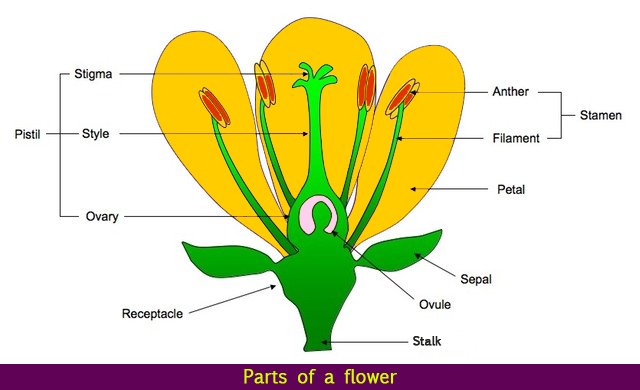
It’s also key to notice whether the flower has a stalk (also called the stem, or peduncle) or not. In fact, all flowers have a stalk, but in stone fruit, it’s very short and insignificant, while pome fruit (that’s apples, pears, and quinces) bear their flowers on long stems. The exception in the stone fruit category is cherries, which also bear their flowers on stems.
OK, without further ado, let us show you some of the flowers from the many different types of fruit trees in our garden and orchard.
Identifying apple flowers
Apple flowers are noted for their beauty. They’re white, but have gorgeous pink buds, which gradually fade to white as the flowers age.
On paper, apple flowers sound similar to apricots, but they look quite different. One of the differences is that the stamens tend to be shorter than the petals in apple flowers, whereas in apricots the stamens are much longer.
The other major difference is that apple flowers are on stems, while apricot flowers grow directly on the branches or laterals.
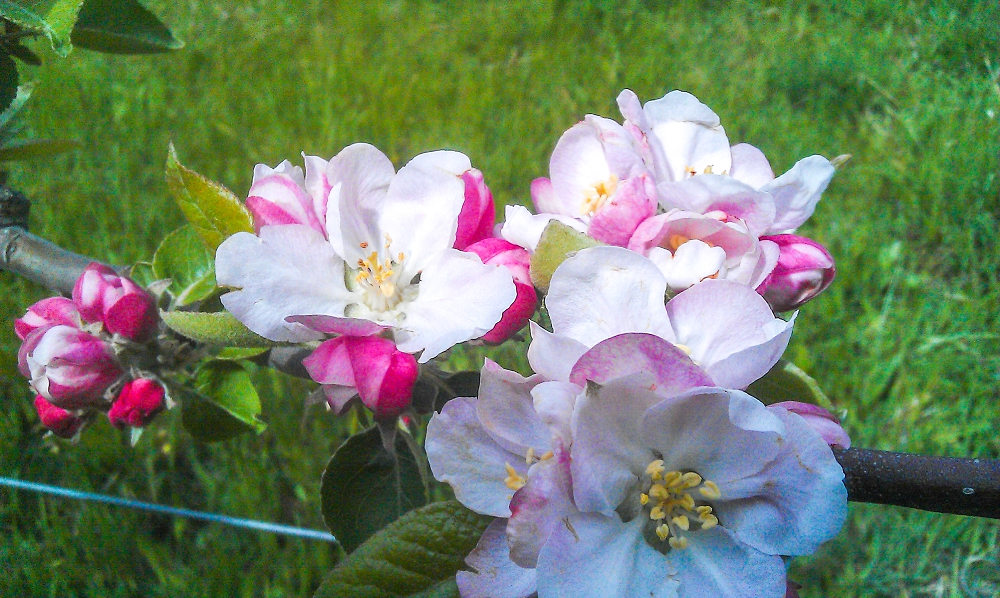
The anthers also tend to be larger and more club-shaped than apricot anthers.
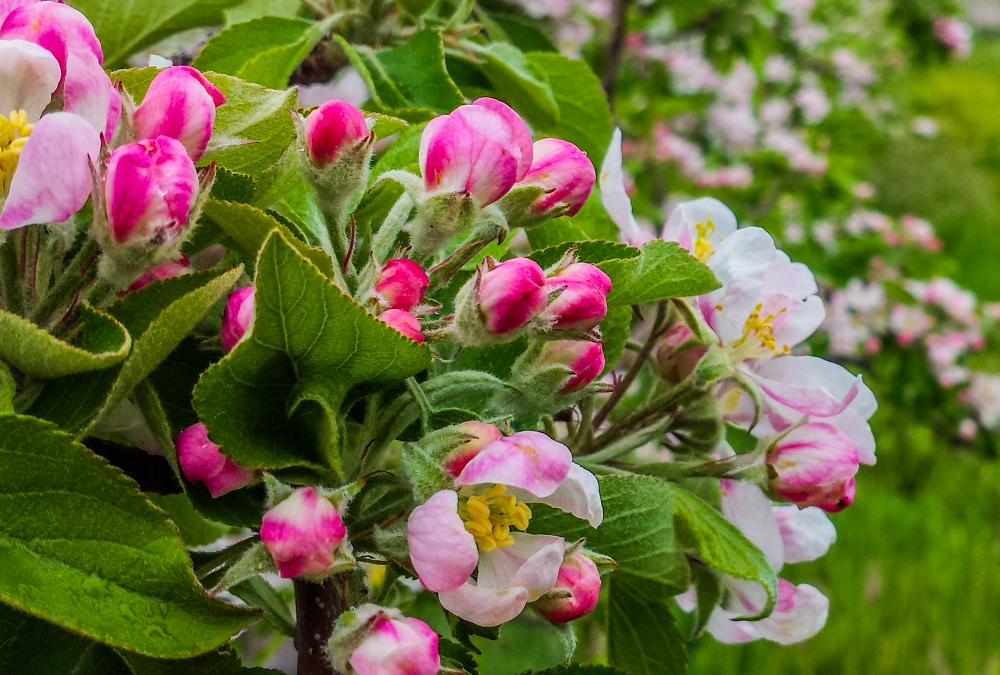
Apricot flowers
Apricot flowers and plum flowers are deceptively similar. The main difference is in the sepals (check the diagram above if you’re not sure which part of the flower this is).
Both fruit types have white flowers, white filaments, and yellow anthers. But apricots have pink sepals and plums have green sepals, which gives the flowers a completely different and very distinctive aesthetic.
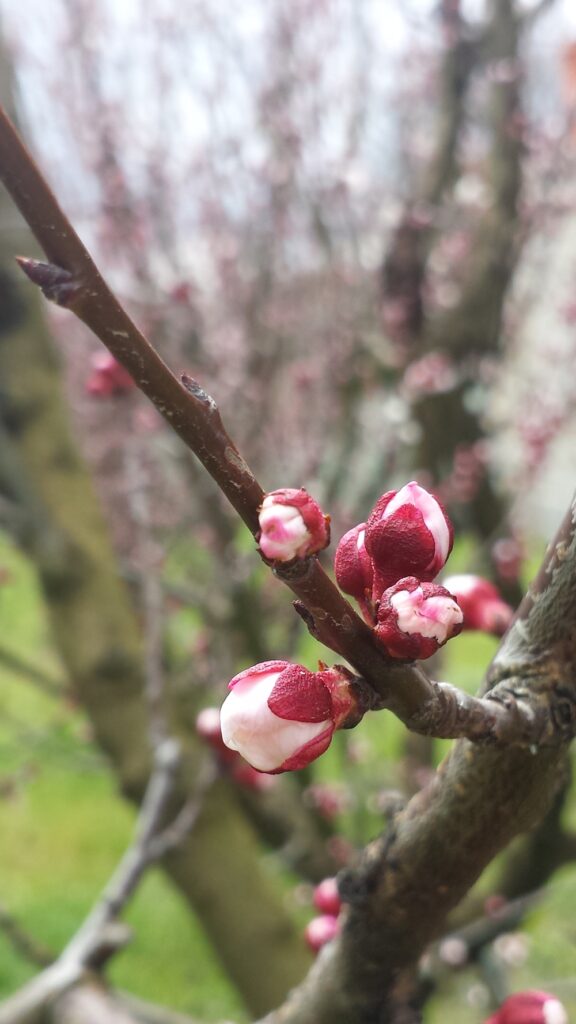
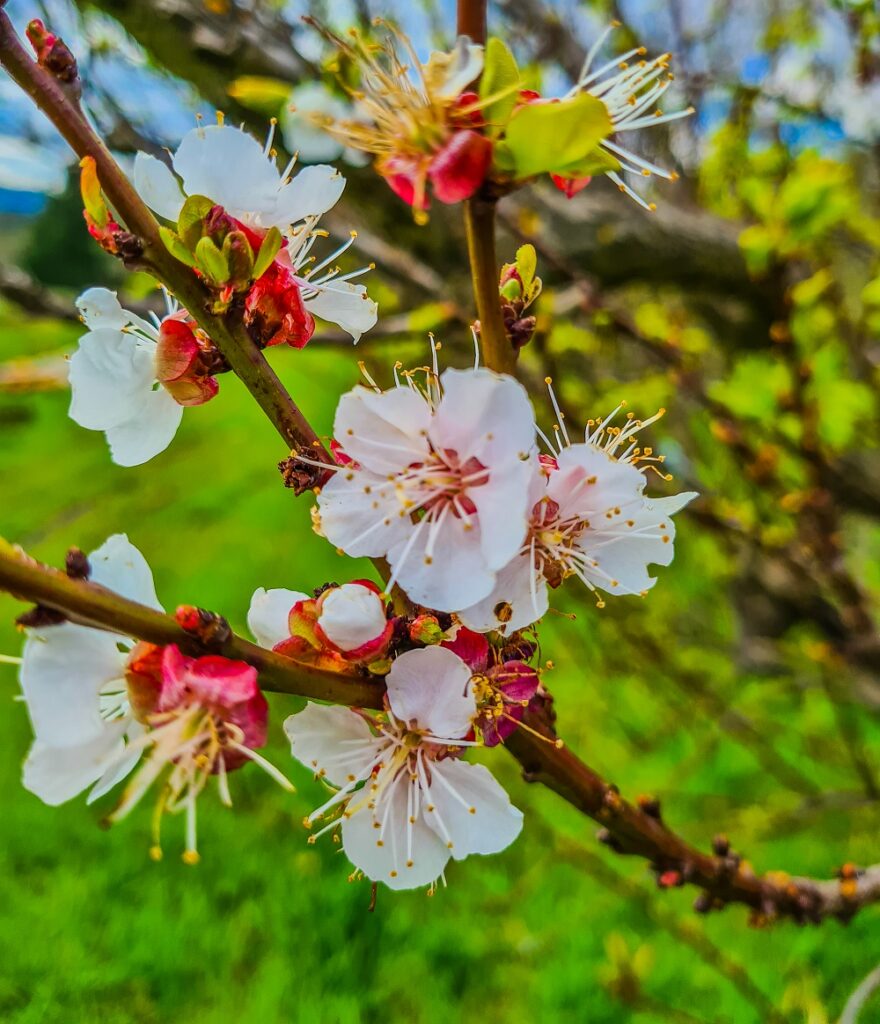
The other difference to note is that apricot flowers have insignificant stems, appearing to grow directly from the branch.
Flowers on cherry trees
Cherry flowers are white like so many other fruit trees, but they have a couple of distinctive features to help you identify them.
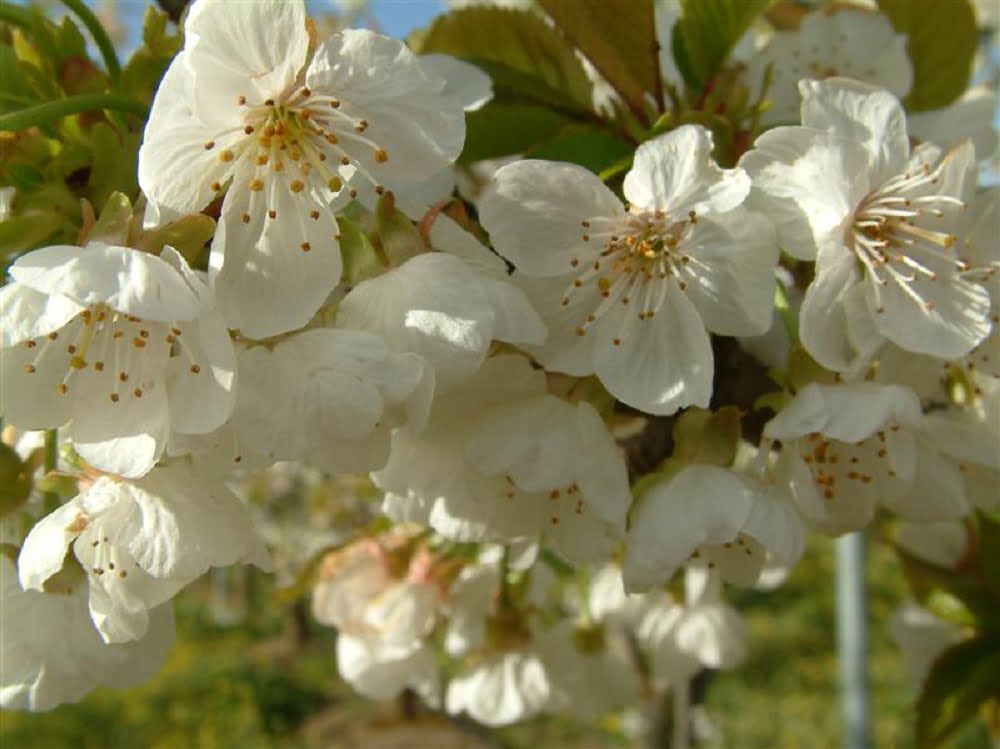
The first is that they are one of the last fruit trees to flower. Secondly, cherry blossoms hang down on long stems.
Peach and nectarine blossom
We’ve lumped these together because their flowers are essentially the same.
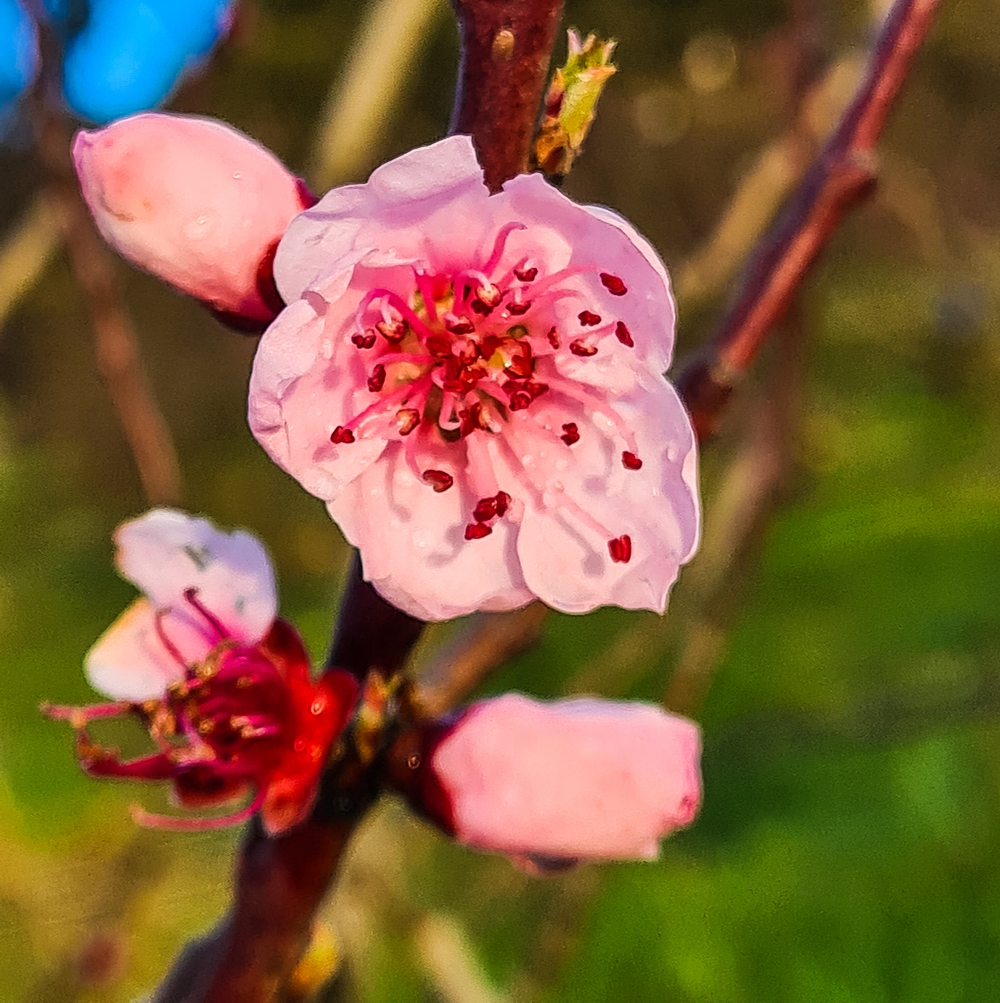
These are some of the most colourful and spectacular of the fruit tree blossoms. They range from flowers with soft pink petals, pale pink filaments, and dark pink anthers through to riotous double-pink flowers with crimson filaments and magenta anthers.
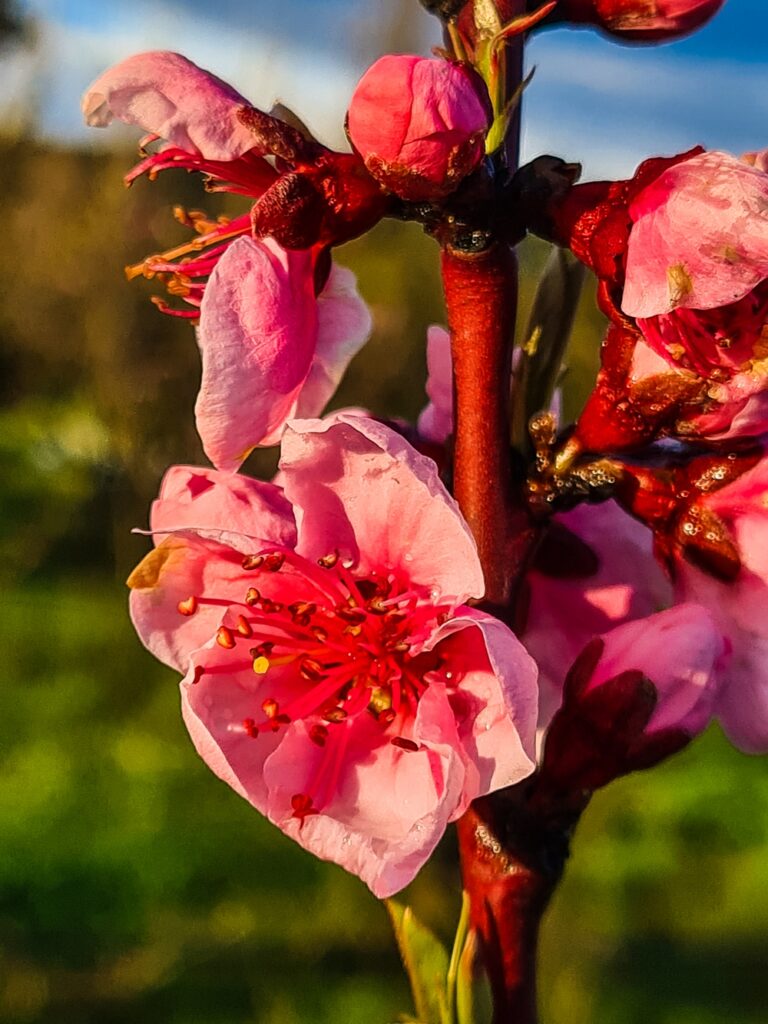
Pear flowers
Like apples and quinces, pear flowers grow on stems, rather than directly on the laterals.
Another distinctive feature of pear flowers is the colour of their anthers. They are usually a dark colour which tends to get even darker as the flower ages.
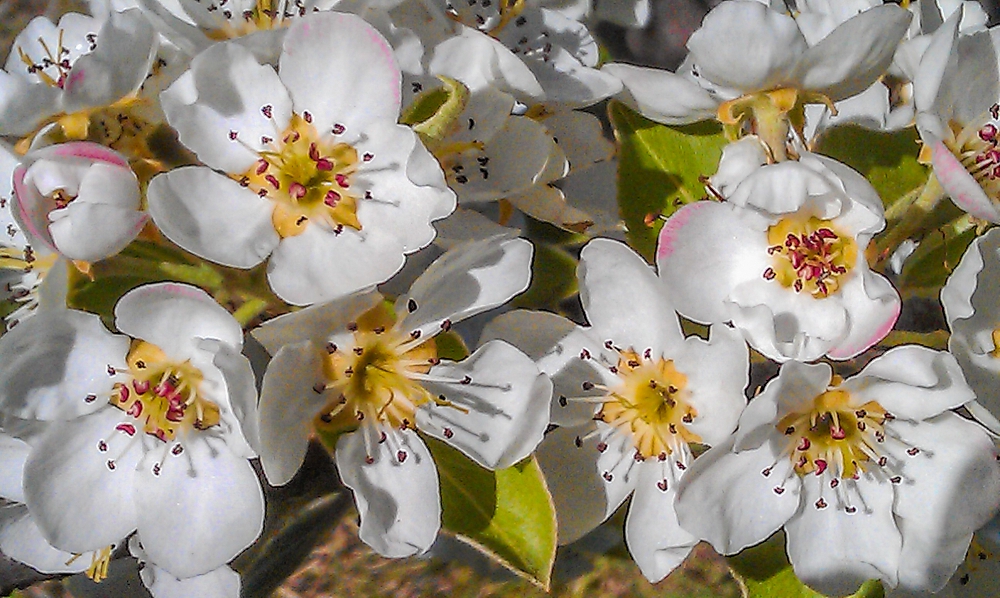
Different varieties have different coloured anthers ranging from crimson through to dark brown.
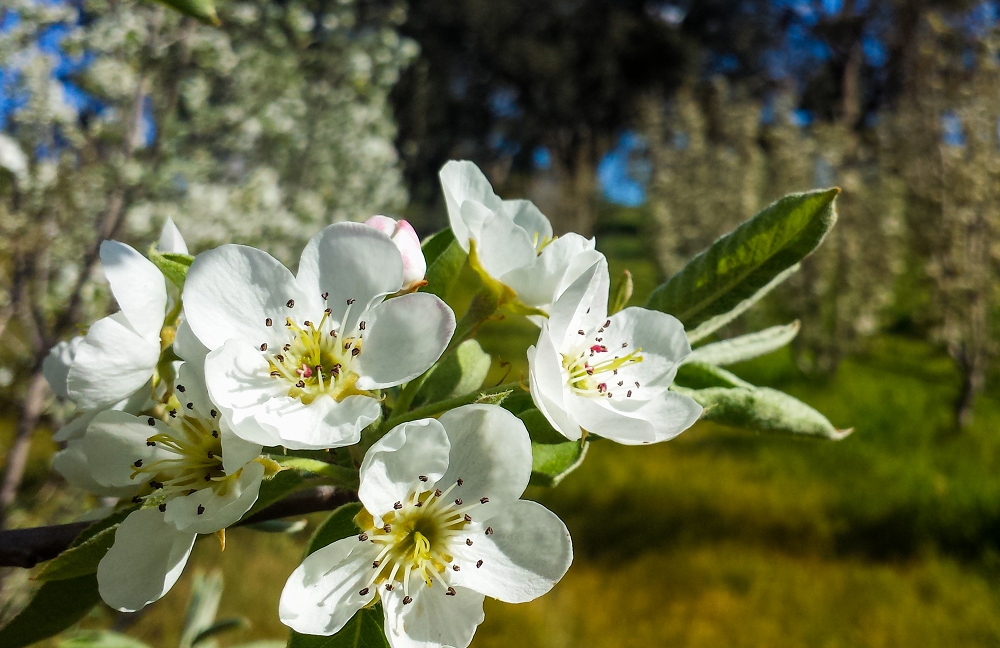
Plum blossom
Plum flowers look similar to apricot flowers, but unlike apricots, plum flowers grow on stems.
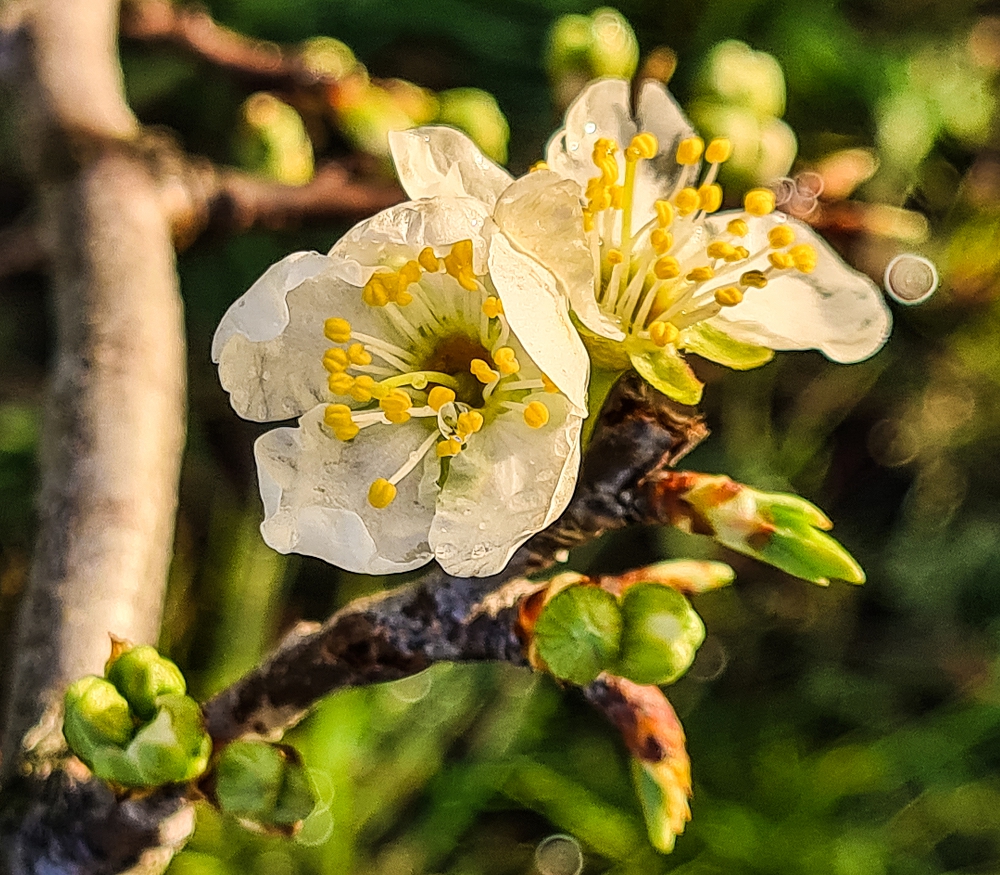
They also have green sepals and their filaments tend to have a greenish tinge as well. There’s nothing pink at all about these flowers!
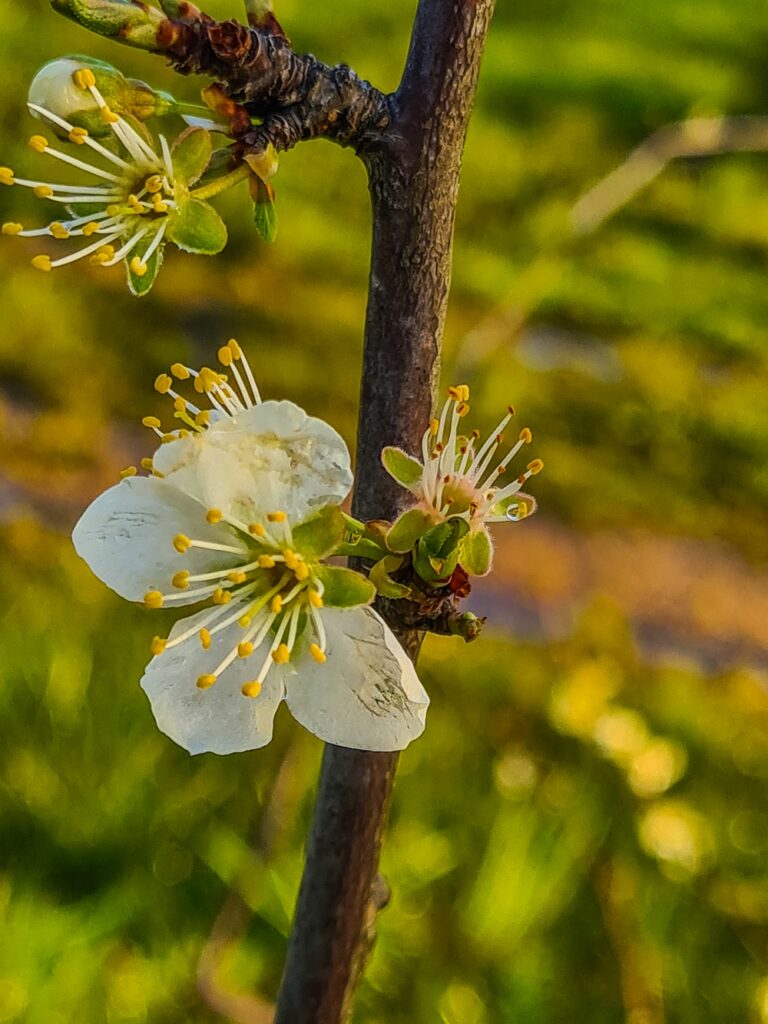
Quince flowers
Quince flowers have larger petals that are very showy and blowsy. They are usually pink tinged and often show a gradation of colour within the petal.
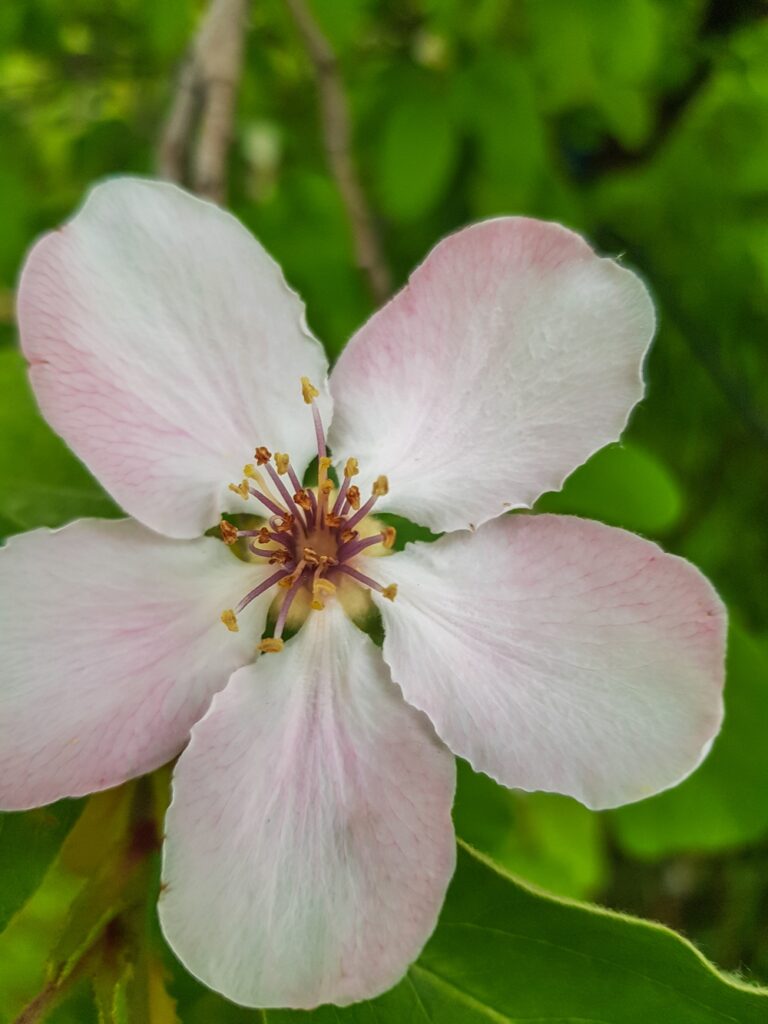
Quinces usually flower earlier than pears (to which they’re closely related) and apples.
Spring is a joyous time in the garden if you have flowering fruit trees. Both the look and the smell of your trees can be absolutely intoxicating.
But it’s also a time to pay close attention to your trees. Becoming a good ‘garden detective’ will help you be a better fruit grower, and spring is the perfect time to practice your skills.
Flowers are just one of the signals to look out for. Different fruit trees also have different types of leaves, but that’s a whole other topic!
Related Articles
How can you get support for a community orchard?
Find out how to access resources and support to start a community orchard and build food security and resilience.
How to remove fruit tree suckers…the right way
Fruit tree suckers should be removed every year or they cause problems, but it’s important to do it the right way.
Extend your fruit season with late-ripening fruit trees
Extending your fresh fruit season with late-ripening fruit trees is an easy way to increase food security and decrease risk.

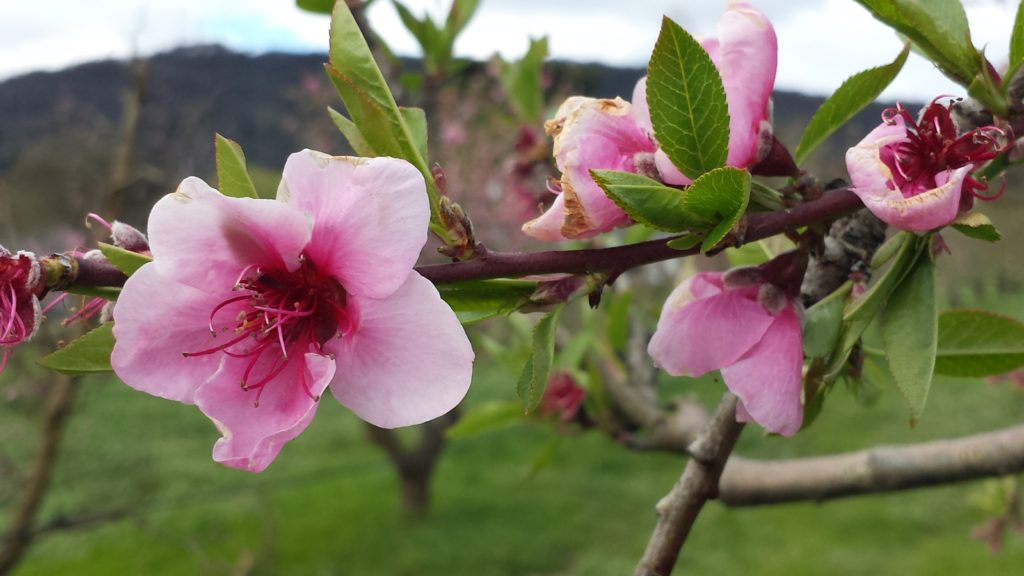


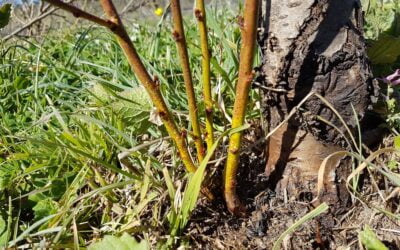
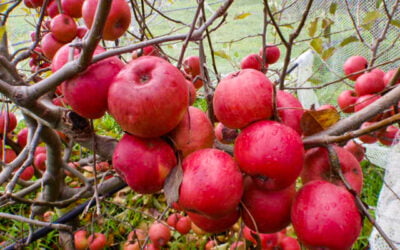


Thank you SO much for the clearly-defined differentiating characteristics! That was most helpful.
Now I know what is growing in my unlabeled pots from the neighborhood “FREE” box!
Perhaps, once the saplings are larger and start to produce fruit, I might be able to figure out the varietals!